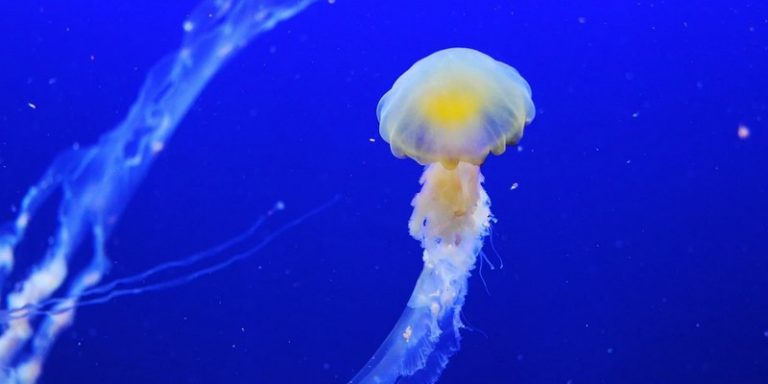
A team of researchers from the University of Huelva and the University of Malaga, Spain, has developed an artificial intelligence model that anticipates the arrival of jellyfish on beaches. The design of this tool was initiated by a study to analyze the behavior of these marine animals. This project also falls within the framework of participatory science, as citizens played an essential role in the research process.
An environmental and participatory study on the behaviour of jellyfish
This study was financed by the Spanish Ministry of Science and Innovation, with the support of the Spanish Ministry of Economic Transformation, Industry and Knowledge and the European Social Fund’s Operational Programme “Employment and Inclusion”.
Juan Carlos Guiérrez-Estrada, Inmaculada Puildo-Calvo, Antonio Peregrin, Jose Carlos Báez, Juan Jesús Bellido Lopez, Lucrecia Souviron-Priego, Jose María Sánchez-Laulhé, J. A. Lopez and A. García-Gálvez are the 9 authors of the publication presenting the results of this study.
The researchers collected the data generated by the inhabitants of Malaga through an application designed from 2013 and named “Infomedusa”. This application aims to have users share information on the state of the sea, wave height, weather or the presence of wind, and this every day.
Data exploited by a machine learning and natural language processing model
With this data, the experts established the dynamics and the path of these marine species as they approached the beaches of the Costa del Sol. Thus, they noticed that jellyfish first reach the coasts closest to the Strait of Gibraltar and, from there, are gradually carried by the currents and pushed by the wind towards the east. As soon as they are close enough to the coast and if the wind blows strongly perpendicular to the beaches, they reach the bathing areas.
However, the data are sometimes inaccurate. Citizens describe what they think and what they see in different ways. While some people find a 50 km/h wind strong, others may believe it is “moderately” strong. This is where the second step of the study comes in: the creation of a machine learning and natural language processing model.
This AI system analyzes the sentences written by citizens on the application to capture the relevant data and thus analyze them to estimate the presence of jellyfish near the beaches. To train the model, a glossary of 557 basic words related to the data of interest to the researchers was used. Each word then corresponds to a numerical value to explain the strength of what is being described: if a user indicates that there are “a lot of jellyfish”, the term “a lot” will be associated with a high numerical value.
Improving the artificial intelligence model and data collection
At present, the team of researchers, which has also been joined by experts from the Spanish Institute of Oceanography, is continuing its work and seeking to exploit different techniques to facilitate the interpretation of the data provided by citizens. In the long term, the aim is for this tool to have an increasingly small margin of error.
One of these techniques would be to help users enter information about the application in a much more specific way. By guiding them with predefined choices, for example. In this way, according to Juan Carlos Gutiérrez-Estrada, lead author of the publication, “it would be easier to interpret this data and there would be no need to intervene to try to analyze it”.
Translated from La participation citoyenne et l’intelligence artificielle au coeur d’un outil pour anticiper la présence de méduses









